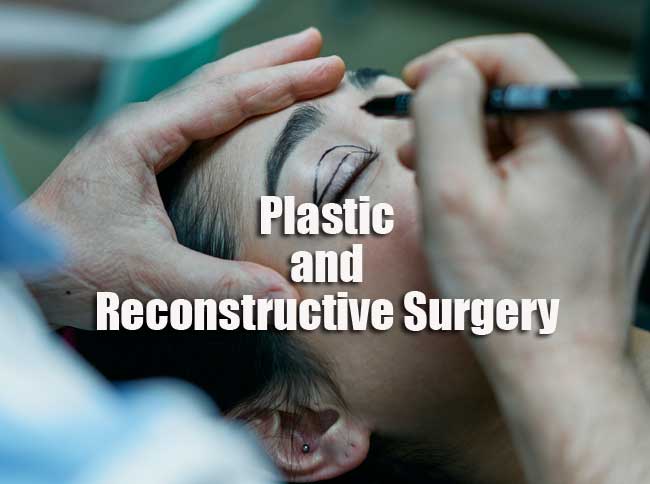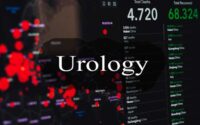Plastic and Reconstructive Surgery MCQ
Plastic and Reconstructive Surgery MCQ paper for the written examination is given below. Candidates who are looking for Plastic and Reconstructive Surgery exam MCQ paper can find in this section. The applied candidates who are getting prepared for the Plastic and Reconstructive Surgery can view this page for the Plastic and Reconstructive Surgery Last Ten Years MCQ Papers.

Download the Plastic and Reconstructive Surgery MCQ & Solutions & make it as a reference for your exam preparation. Take advantage of these Plastic and Reconstructive Surgery MCQ Papers in a proper manner to get qualifying Marks. Last 5 years Plastic and Reconstructive Surgery MCQ Papers provided here. Candidates who are applied for the above exam can check and download the Plastic and Reconstructive Surgery MCQ Papers from here.
MCQ on Plastic and Reconstructive Surgery
1. Worthen flap for closure of a lateral forehead defect is:
(1) A local flap
(2) Advancement flap
(3) Bilobed flap
(4) Rotation flap
2. An eyelid defect of less than 25% of the cyelid can be corrected by
(1) lateral canthotomy and primary closure
(2) Mustarde technique
(3) Forehead flap
(4) Tenzel flap
3. A flap of choice for central full thickness defect of the upper lip is :
(1) Abbe flap
(2) Estlander flap
(3) Karapandzic flap
(4) Gillies fan flap
4. A suitable muscle flap in one stage facial reanimation for smile reconstruction in facial palsy is :
(1) Palmaris longus
(2) Radial artery forearm flap
(3) Pectoralis major flap
(4) Latissimus dorsi flap
5. The ‘Mobius syndrome’ is characterised by which one of the following ?
(1) Right side facial palsy
(2) Left side facial palsy
(3) Bilateral facial palsy
(4) Unilateral facial paresis
6. Which of the following free flap skin paddle is relatively insensate in head and neck reconstruction in cases of malignancy ?
(1) Radial artery forearm flap
(2) Anterolateral thigh flap
(3) Rectus abdominis myocutaneous flap
(4) Pectoralis major myocutancous flap
7. An indication for use of non- vascularised method of mandibular reconstruction Is :
(1) Mandibular fracture non-union
(2) Large defects
(3) Composite defects of bone and soft tissue
(4) Defects of mandible with scarring
8. The platysma flap for coverage of the lower face is based on
(1) superior thyroid artery
(2) submental artery
(3) transverse cervical artery
(4) occipital artery
9. Radionecrotic defects of the nape of neck can best be reconstructed by :
(1) Latissimus dorsi flap
(2) Trapezius musculocutaneous flap
(3) Pectoralis major myocutaneous flap
(4) Deltopectoral flap
10. Histopathology showing picket fence arrangement of nuclei in the peripheral layer around skin tumour Is suggestive of
(1) Keratoacanthoma
(2) Seborrheic Keratosis
(3) Squamous cell carcinoma
(4) Basal cell carcinoma
11. Melanomas located in which area have a worse prognosis :
(1) Nose
(2) Cheek
(3) Forehead
(4) BANS area
12. Tessier cleft which is the most laterally placed on the face is :
(1) Number 6 cleft
(2) Number 7 cleft
(3) Number 8 cleft
(4) Number 10 cleft
13. Treacher Collins syndrome characterised by clefting in the maxillozygomatic, temporozygomatic and frontozygomatic regions is a combined manifestation of
(1) Number 5, 6 and 7 Tessier cleft
(2) Number 6, 7 and 8 Tessier cleft
(3) Number 7, 8 and 9 Tessier cleft
(4) Number 8, 9, 10 and 11 Tessier cleft
14. The classic test to diagnose velocardiofacial syndrome otherwise known as Di George syndrome is :
(1) FISH (fluorescent in situhybridisation / analysis)
(2) Chromosomal karyotyping
(3) MR angiography
(4) Serum creatine kinase level estimation
15. The incisive foramen, a key anatomic landmark used in classification of clefts, that is commonly followed was described by :
(1) Veau
(2) Kernahan
(3) Oborne
(4) Pohlmann
16. Brachycephaly is the term for
(1) Narrow skull
(2) Long skull
(3) Wide skull
(4) Asymmetrical skull
17. Pfeiffer syndrome consists of all except
(1) Midface hypoplasia
(2) Brachydactyly
(3) Cleft palate
(4) Hypertelorism
18. The ‘whistle’ deformity, a secondary deformity of cleft lip and palate repair refers to which one of the following :
(1) Nose
(2) Whistle shaped scar on the lip
(3) Vermilion
(4) Buccal mucosa
19. A simple ridge of mucosa created on the back of the pharynx of cleft patients to try and reduce nasal escape is called after whom ?
(1) Pigott
(2) Hynes
(3) Passavant
(4) Orticochea
20. Classifications, scoring systems and syndromes that are relevant to cleft lip and palate and its management include all except
(1) GOSPAS scale
(2) Kernahan’s classification
(3) CATCH-22 syndrome
(4) Kubitza’s scale
| Practice Set | MCQs |
| Quiz | Questions and Answers |
21. In bilateral cleft lip repair, the forked flap takes donor tissue from which structure ?
(1) Nasal mucosa
(2) Buccal mucosa
(3) Prolabial vermilion
(4) Prolabial skin
22. Which is correct regarding hemifacial atrophy, also known as Romberg’s disease ?
(1) is due to a chromosome abnormality (11 p 3)
(2) is best monitored using thermography
(3) is due to chromosome abnormality (15 q 11)
(4) best treated surgically within 6 months of diagnosis
23. A harlequin orbit is diagnostic of
(1) Sagittal craniosynostosis
(2) Coronal craniosynostosis
(3) Metopic craniosynostosis
(4) Fibrous dysplasia
24. A. suitable diagnostic tool for evaluation of velopharynx before surgery in patients with occult submucous clefts is :
(1) Nasoendoscopy
(2) Fluoroscopy
(3) Magnetic Resonance Imaging
(4) Contrast enhanced computedtomography
25. The first to advocate including of palatal periosteum in flaps used for cleft palate repair was
(1) Von Langenbeck
(2) Dieffenbach
(3) Hulke
(4) Fergusson
26. Telecanthus is defined as
(1) Lateral displacement of orbits
(2) Lateral nasal displacement
(3) Increased width of nasal bridge line
(4) Prominence of supra orbital rims
27. In a case of craniofacial macrosomia, which of the following is true regarding jaw opening ?
(1) Jaw does not deviate on opening
(2) Jaw deviates to the affected side
(3) Jaw deviates to the normal side
(4) Clicking of jaw is present on the affected side
28. All are true regarding submucous cleft palate except
(1) Bifid uvula
(2) Notching of hard palate
(3) Muscular diastasis of the soft palate with intact mucosa
(4) Pterygoid Hamulus is absent
29. The following is true regarding cleft palate surgery
(1) Intravelar veloplasty involves repair of nasal mucosa
(2) Veau-Kilner-Wardill technique is a push forward technique
(3) Langenbeck technique involves raising a unipedicled flap
(4) Furlow’s technique is a V — Y plasty
30. Retrognathia is the term used for
(1) Mandibular enlargement
(2) Mandibular protrusion
(3) Maxillary retrusion
(4) Mandibular retrusion
31. Le Fort Il osteotomy may be indicated in
(1) Thyrotoxic exorbitism
(2) Binder syndrome
(3) Apert syndrome
(4) Crouzon’s syndrome
32. The facial bipartition technique is best suited to the correction of
(1) Hemifacial microsomia
(2) Apert’s syndrome
(3) Mandibular prognathism
(4) Frontonasal encephalocoele
33. In relation to presurgical orthopaedics in context of cleft lip and palate :
(1) can be undertaken simply by use of an obturator
(2) its use is universal in severe deformities
(3) dynamic devices are often fixed to the mandible
(4) despite their benefits, they can make subsequent cleft repair more difficult
34. Which one of the following is true regarding Furlow’s double opposing plasty in cleft palate repair ?
(1) The levator muscle is included in the anteriorly based flap
(2) The levator muscle is included in the posteriorly based flap
(3) Z plasty is performed on the oral surface
(4) The levator muscle is not dissected
35. The triad of Pierre Robin sequence consists of which one of the following ?
(1) Glossoptosis, micrognathia and cleft palate
(2) Glossoptosis, cleft palate and TMJ ankylosis
(3) Glossoptosis, micrognathia and air way obstruction
(4) Glossoptosis, micrognathia and TMS ankylosis
36. A patient with an isolated chest wall defect 4 cm in diameter involving two ribs with adequate soft tissue is treated appropriately by
(1) Nylon or polypropylene mesh only
(2) Any mesh with a methyl methacrylate sandwich
(3) Methyl methacrylate alone
(4) No chest wall reconstruction is needed
37. Which of the following statements regarding autologous breast reconstruction is incorrect ?
(1) Tissue expanders do not work well for irradiated chest wall breast reconstruction
(2) The nipple must always be resected in cases of invasive breast cancer at less than 2.5 cm of the areola
(3) Primary reconstruction is usually better than secondary reconstruction
(4) Skin sparing mastectomy yields more local recurrences
38. In the process of breast implant selection, the following are important except
(1) soft tissue quality
(2) implant volume
(3) Bra and cup size
(4) Implant shape and type
39. Concerning mastopexy
(1) Lassus is credited with describing the vertical mastopexy without undermining
(2) Lassus is credited with describing the vertical mastopexy with undermining
(3) Ptosis is derived from the Greek word for ‘hanging’
(4) The Benelli technique does not allow parenchymal repositioning
40. The most reliable technique of breast reduction to preserve Nipple Areola Complex (NAC) sensitivity is
(1) The superior pedicle
(2) The inferior pedicle
(3) Lateral pedicle
(4) Wuringer’s septum based pedicle
41. In which one of the following mastectomies, both the pectoralis major and minor are removed ?
(1) Simple mastectomy
(2) Subcutaneous mastectomy
(3) Halsted mastectomy
(4) Modified radical mastectomy
42. Which of the following is not an advantage of immediate breast reconstruction after skin sparing mastectomy ?
(1) Improved cosmesis
(2) Improved oncologic outcome
(3) Psychologically beneficial
(4) Smaller scarring
43. Good flap options for obliteration of defects of the pleural cavity include all except
(1) Rectus abdominis muscle flap
(2) Serratus anterior muscle flap
(3) Pectoralis major muscle flap
(4) Latissimus dorsi myocutaneous flap
44. Pectus carinatum is characterised by which of the following :
(1) Defect in the sternum
(2) Depression of the sternum
(3) Abnormal growth of the cartilage at the costochondral junction
(4) Manubrium is spared in this deformity
45. Which of the following is not true of anatomical implants ?
(1) Indicated in patients with minimal soft tissue coverage
(2) They may have higher rate of rotation
(3) They may affect the early diagnosis of breast cancer
(4) They can provide better aesthetic outcome



